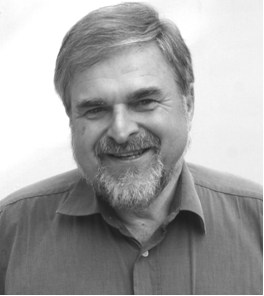Joachim Ulrich Adis (1950 - 2007)

On August 29th, 2007, our colleague and dear friend Joachim Adis passed away in hospital attended until his last sigh by his family. He was only 57, the last 5 years of his life following cancer and severe surgery having been especially difficult to him.
He was born in Stuttgart, Germany. At an age of 20 he entered the University of Göttingen, where he studied biology for the next 5 years. After graduation, he spent 3 years pursuing his Ph.D. degree at the National Institute for Amazonian Research (INPA), Manaus, Amazônas, Brazil, which he defended in 1979 at the University of Ulm, Germany. After a short period of active field-work (canopy fogging) at Manaus, and a post-doc fellowship at the Smithsonian Institution, Washington D.C., U.S.A., Joachim was employed in 1980 as Scientist by the Tropical Ecology Working Group of the Max-Planck-Institute for Limnology, Plön, Germany. He worked there virtually until his death.
From September 1980 to December 1988, he and wife Irmgard and daughter Bethania lived in Manaus, while Joachim served as scientist and foreign representative of the German-Brazilian Project INPA/MAX-PLANCK and amassed material for a second doctoral degree. After returning to Germany, he defended his second thesis in 1991 at the University of Kiel, where he became a Professor in 2000.
From the outset of his scientific career, Joachim focused on holistic analyses of ecosystems. He investigated the ecology, ethology, physiology, morphology, diversity and genetics of poorly vagile terrestrial invertebrates in Amazonian wetlands (especially inundation forests) and compared their adaptations with the same invertebrate groups from non-flooded areas in and outside the tropics. He developed an intricate classification of the ecological adaptations and survival strategies in numerous myriapods and other land arthropods to the extreme conditions existing in inundation forests in Amazonia.
I first met Joachim Adis at the 8th International Congress of Myriapodology in Innsbruck in 1990; before then we had only corresponded. He immediately invited me to study his precious Amazonian millipedes, a task that I gladly accepted. Just a few months later in 1991, I spent a month conducting research at the Tropical Ecology Working Group in Plön on my first scholarship from the Max-Planck-Society. Thanks to these scholarships, willingly and regularly arranged for me by Dr Adis and Professor Dr. Wolfgang Junk, I have spent there at least two complete years. In addition, I twice received grants from the Max-Planck-Society to travel and work in Brazil and Peru, in particular to revisit the sites at Manaus where Joachim worked in the 1980s. In 1996, he and I travelled and collected millipedes together.
During numerous visits to Plön, my wife and I became very close to the Adis family. Joachim effectively became my elder brother, and I regard Irmgard and Bethania, as well as Berit Hansen, Joachim's laboratory assistant, as members of my own family.
The death of Joachim Adis, one of my best and dearest personal friends, is very painful to me. Our scientific cooperation was also fruitful. Based on his own or jointly collected material, or samples he arranged to be sent for study to Plön, I described about a hundred new millipede species and was pleased to award specific patronyms - adisi, bethaniae, and irmgardae - plus the generic patonyms, Adisia and Adisiella. Joachim published several books as author and/or editor with my publishing house Pensoft; we jointly supervised several students in Plön who did their theses on millipedes; and we co-authored two dozen papers.
Joachim Adis was astonishingly active and cooperative, and had numerous personal contacts. His interests in tropical ecology, including those of nearly 3 dozen students he supervised, ranged from taxonomy and bionomics to biogeography and evolutionary theory. While he focused on terrestrial arthropods from Amazonia and the Pantanal, he also investigated semi-aquatic and aquatic groups as well as plants, fossils, caves and other topics. Not surprisingly, many of his papers have several co-authors, representing syntheses of several lines of research. His bibliography lists over 250 papers, many of them devoted to myriapods. Certainly even more publications by various authors, including several myriapodologists like myself, dealt with his material. At the moment the number of patronyms in honour of Professor Adis amounts to 4 genera and 35 species, some more will definitely follow.
He will be missed not only as the head of a wonderful family, but also as a remarkable personality, dear friend, outstanding colleague and exceptionally dynamic researcher.
Rest in piece, dear Joachim! We'll never forget you as long as we last. My deepest condolences to all his near and dear.
Dr Sergei Golovatch
Russian Academy of Sciences, Moscow
